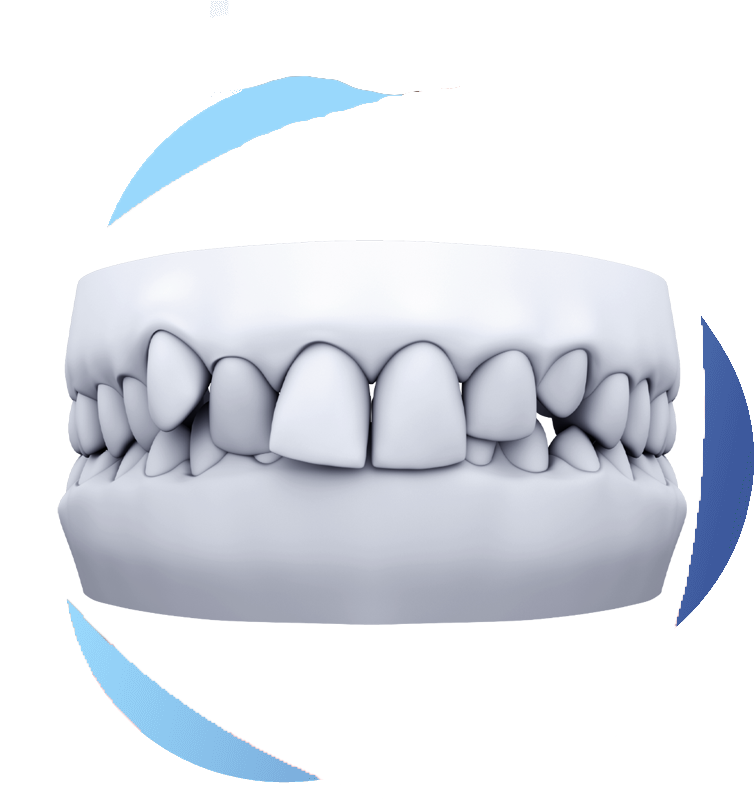Overview
Traumatic occlusion, also known as a bad bite, results from misalignment of the teeth and jaws. While often rooted in genetics, it can also be caused by factors such as teeth crowding, decayed or worn teeth, poor dental work, and the absence of back teeth. Habits like thumb sucking and teeth clenching or grinding (bruxism) can contribute to these issues.The absence of back teeth in adults can lead to or worsen a 'deep bite,' causing a collapse of the bite and lower face, resulting in a more aged appearance.
Among various bite disorders, a deep bite is particularly detrimental to both teeth and the health of jaw joints. It significantly impacts facial aesthetics, reducing facial height, increasing wrinkle lines, and contributing to an aged appearance, especially when the back teeth wear down.
While it may seem primarily an aesthetic concern, a bad bite is more serious than meets the eye. It can lead to substantial damage to teeth and gums, as well as headaches and temporomandibular joint (TMJ) disorders.
A deep bite is characterized by upper front teeth biting excessively over the lower front teeth.
Why Treat Deep Bite?Unlike conditions with immediate symptoms like pain, traumatic occlusion and deep bite act as silent diseases, resulting in gradual, seemingly insignificant changes that become apparent only when irreversible damage has occurred. It manifests as generalized sensitivity, and the impacts are often recognized too late.
Features of Deep Bite: 1. Initial Stages:- Wear of lower front teeth with surface flattening.
- Craze lines/thin fracture lines in front teeth.
- Accumulation of deposits and bleeding gums, mainly in lower front teeth.
- Poor tooth function, especially during chewing.
2. Progression:- Extensive wear on top edges of lower teeth, leading to sensitivity.
- Sudden chipping of teeth and regular bleeding of gums.
- Gum recession due to top edges of teeth biting into the gums.
- Affecting smile aesthetics, with upper teeth wearing on their chewing surfaces.
- Serious issues may result in the loss of front teeth.
- Bad breath as a side effect of gum disease and deposits in teeth.
3. Advanced Stage:- Excessive wear causing generalized sensitivity and pain in severely affected teeth.
- Gingival recession and TMJ pain (jaw joint and muscle pain).

